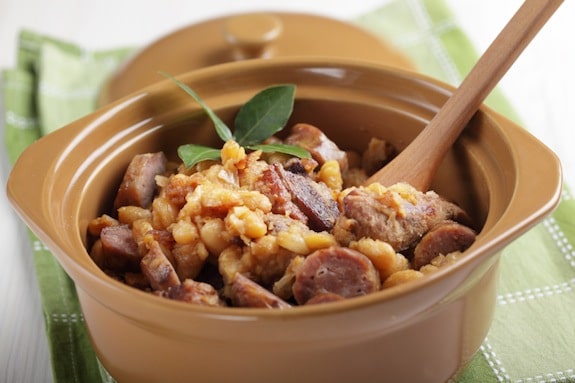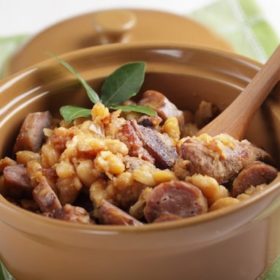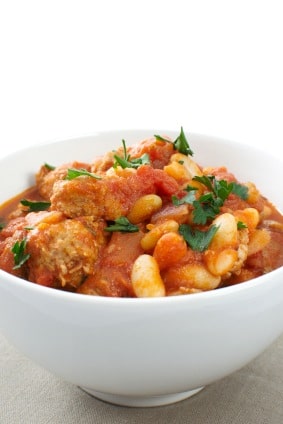
My attachment to cooking borders on obsession at times, though not the kind of obsession I’m used to experiencing. While a piercing interest in something can manifest itself in all sorts of erratic behavior, much like a July Fourth sparkler, my passion for cooking is more of a slow burn, dominating a vast percentage of my random thoughts throughout the day. I don’t have a raging drive to cook; rather, it’s a pleasantly consistent pull towards all things culinary.
And, I’m good at it. At least that’s what I tell myself. When you’re good at something, sometimes you sail along at a good clip, taking your successes for granted and forgetting that there’s a heartbreaking thump of ineptitude awaiting anyone who stops looking at the details and decides to gloss over the activity at hand. You stop enjoying yourself. You become careless, more susceptible to outside stressors. And by “you,” I mean “me.”
I recently picked up a copy of Essential Pepin, a hefty new release from the master of French cuisine himself, Jacques Pepin. My sights have turned steadily towards French cooking lately, far more so than I’ve known in the past, and this book houses a huge collection of Pepin’s favorite recipes. As a intriguing sidecar, it also comes with a DVD that features our fine Chef sharing his more useful techniques with the reader. If you don’t have the money to take a class from Pepin, this DVD might just be the next best thing.
Once I received my prize in the mail, I set to studying the recipes like a coffee-crazed grad student about to enter into oral examinations. So many good things to make! So many good things to eat! I decided that my first experience with this cookbook would be a cassoulet, since I hadn’t made one in ages. I was suddenly awash in memories of tender beans tucked into a lush, meaty casserole. Yes, please, and now.
The day started out easily enough. Just a few simple shopping errands, and then back home to start our three hour journey into French home cooking. Unfortunately, the traffic gods were against us, as were the other minor deities in charge of retail efficiency. As we headed home, around 6pm, I realized we wouldn’t be eating until 9. If we were lucky.
Let the stress begin.
If there is one inalienable truth about cooking, it’s this: stress and food preparation do not mix well. There’s the normal stress of the kitchen, when you’re in the zone, but if you find yourself in the weeds and not managing your mental mise en place alongside your physical preparation steps, you’re in trouble. People get hurt, steps get forgotten, and possibly worst of all, your project is completely unedible. If you’re going to have a competent finished product – and experience any sort of joy from the act of cooking – then you need to sloooooooooow doooooowwwwwwnnnnn.
Well, I didn’t slow down. There were beans flying, poultry hitting the floor, a crimson spurt of tomato paste on the wall. I ignored these danger signs, as humans are wont to do, and dug myself deeper into my hole. Finally, when I drained my gorgeously spiced bean and chicken broth into a bowl to set aside, I thought I was out of the weeds. I was in the home stretch; all I had to do was combine the recipes parts into the casserole dish and “bake until dense with a crispy crust.”
As I went to add the bean broth back into the casserole dish, I noticed that my ever diligent boyfriend, Thad, had started washing dishes, something I always do (I like to keep an uncluttered kitchen, so I often wash dishes as I cook). Unfortunately, while not paying attention, I had left the heart and soul of the whole dish, the brilliantly savory broth, in a bowl in the sink. And there it went, down the drain.
The impending meltdown that had been building throughout a day fraught with running against the clock was no longer an abstract possibility – it was happening, and now. Thad found me in the basement, crying and cursing my own stupidity. My dish was lost and I was inconsolable.
Ok, ok, so I know that my outburst was likely a touch overdramatic (or, a lot overdramatic) but I learned something that day: slow down. Moving at light speed leaves you far more prone to mistakes, and gives you less room to recover from them. The toxic speed that stress propels ruins what can be a joyful, loving experience, and instead leaves you prostrate on the floor next to the washing machine, bawling like a four year old who didn’t get dessert.
To best honest, I find myself relearning this lesson over and over again in life. I’m a fast paced person, and I often move at break-neck speed through life. While it serves a purpose, it’s not terribly satisfying to try and catch snippets of the world as they blur past you, moving too fast to savor. I want to enjoy my time in the kitchen, and moreso, my time here on Earth. And in order to do that, I need to chill the f*** out.
So I collected myself, pulled some leftover chicken stock from the refrigerator, added a few flavorants for body, and poured it into the cassoulet. Gone were the sweet notes of onion and carrot, the rich acidity from my vine-ripened tomatoes, the gentle herbal layers provided by my bouquet garni. The dish wouldn’t be what I had wanted, but now I hoped that it would just be good. And guess what? It was fine. Tasty, even. Folks had seconds, then thirds, and rolled themselves over to the couch after their final servings. It had been a success, leaving me to learn a second lesson for the night: the toxic trap known as the blind need for perfection.
But that’s a different post.

Stress, Pain, and Cassoulet
Ingredients
- 1/2 whole chicken cut into 4 pieces
- 4 cups of warm water
- 1 pound dried Great Northern navy, or Flageolet beans, picked over and rinsed
- 1 1/2 teaspoons salt
- 1 whole leek washed, trimmed, and split in half
- 1 whole onion peeled and stuck with a clove
- 1 large carrot split length-wise and cut into four pieces
- 1 large tomato peeled, halved, seeded and chopped
- 2 cloves garlic crushed
- 2 teaspoons tomato paste
- 1 whole bay leaf
- 1 sprig of thyme
- 2 sprigs of parsley
- One 1/2 pound piece of pancetta
- 3 cups cold water
- 1 large garlic sausage or kielbasa pricked with a fork
- 1 large (about 2 pounds) thick bone-in pork chop
- 1 teaspoon sea salt
- 1 teaspoon freshly ground black pepper
- 2 thick slices of stale French bread turned to crumbs in a food processor (feel free to use Gluten-Free bread, which works beautifully here)
Instructions
- Add chicken and warm water to a pot, and slowly bring to a boil. Turn heat down to low and barely simmer, uncovered, for 1-2 hours. Remove chicken from broth and set both aside to cool. Once the chicken has cooled, shred the meat with your hands and discard bones.
- In a large pot, add beans, 1 1/2 teaspoons salt, leek, onion, carrot, tomato, garlic, tomato paste, bay leaf, thyme, parsley, pancetta, and cold water. Add 2 cups of the chicken stock you prepared in step one. Bring beans slowly to a boil, skimming off any froth that comes to the top. Once the beans are boiling, reduce heat to low, cover, and simmer for 1 1/2 hours. Add sausage and cook for another 15 minutes.
- While the beans are cooking: Preheat the oven to 350°F (176°C). Season the pork on both sides with salt and pepper and set on a baking sheet. Roast for 50 minutes, then remove from heat and pour fat into a cup to reserve. Use a 1/4 cup of the bean cooking liquid to heat and deglaze the roasting pan, adding the liquid to the beans. Allow the pork to cool and cut into 1-inch pieces. Discard the bone and set meat aside.
- Once the beans are cooked – they should be tender but not mushy – turn off the heat and remove the sausage, pancetta, onion, carrot, leek, bay leaf, thyme, and parsley to a baking sheet. Discard vegetables and herbs.
- Remove the casing from the sausage and cut the sausage into 3/4 inch slices. Slice the pancetta into strips that are 1/2 inch by 3 inches long.
- If you turned off the oven, preheat it to 350°F (176°C) again. In a medium-sized casserole dish, layer the various ingredients into the casserole dish, starting with the beans followed by alternating layers of meat and beans – make an individual layer of each meat: pork, sausage, pancetta, and shredded chicken, and ending with more beans. Moisten the bread crumbs in the reserved fat and spread them over the entire surface of the beans.
- Bake for 20 minutes, until a crust forms on top of the casserole. Break the crust with a spoon and push it into the beans, giving them a nice, nutty flavor. Cook for another 30 minutes. Another crust will form on top of the beans. Let the cassoulet rest 20-30 minutes outside of the oven before serving. Serve straight from the casserole dish, making sure everyone gets a good assortment of meats.

